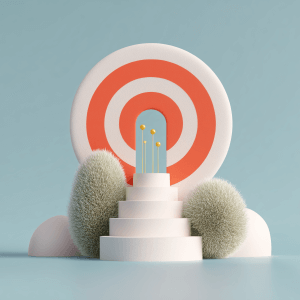What is Flow State Productivity?
Flow state productivity happens when you become completely absorbed in your work. This mental state combines high focus with enjoyment, leading to better performance and creativity. Hungarian-American psychologist Mihaly Csikszentmihalyi first identified this concept during his research in the 1970s, calling it “optimal experience.”
Most people have experienced flow at some point: pivotal moments where time seems to vanish, distractions fade away, and you are fully immersed in the activity, working with remarkable clarity and efficiency. These are often the best moments of peak performance and fulfillment. This state isn’t just pleasant; it’s where your best work happens.
Research shows that regular flow experiences correlate with higher satisfaction, better performance, and increased well-being. By learning to access flow states more consistently, you can transform your productivity without relying on willpower or stress, making the most of each moment of deep engagement.
What You Will Learn
- How to recognize when you’re in a flow state
- Practical techniques to trigger flow states consistently
- Ways to structure your environment for optimal flow
- Methods to extend your flow sessions
- How to overcome common flow state barriers
Key Takeaways
- Flow states combine focus, enjoyment, and skill for peak productivity—these are some of the key factors that contribute to achieving flow state
- Clear goals and immediate feedback help trigger flow
- Your environment significantly impacts flow potential
- Reducing distractions is essential for entering flow
- Regular practice helps make flow states more accessible
- The right balance of challenge and skill is critical
Discover the Science Behind Flow State and Productivity
How Your Brain Changes During Flow
During flow states, your brain functions differently. Brain imaging studies reveal decreased activity in the prefrontal cortex, the area responsible for self-consciousness and self-criticism. This neural shift explains why people in flow report losing their sense of self and inner critic. The conscious mind, which normally filters attention and helps maintain focus by processing only a limited amount of information, plays a crucial role in allowing you to concentrate deeply during flow.
Neurochemically, flow involves several key brain chemicals:
- Dopamine increases, boosting motivation and focus
- Norepinephrine sharpens attention and perception
- Endorphins create a sense of well-being
- Anandamide (similar to THC) promotes lateral thinking
These neurochemical changes create an ideal state for both focus and creativity—a rare combination that makes flow so valuable for productive work. People in flow often lose track of time and external distractions, becoming fully immersed in the task at hand.
The Psychology Behind Peak Performance
Mihaly Csikszentmihalyi, often called the “father of flow,” began studying this state after noticing how artists would become so absorbed in their work that they would forget to eat or sleep. His research found that flow isn’t limited to creative pursuits—it appears across disciplines from sports to surgery to programming.
The psychological components of flow include:
- Complete absorption in the task
- Merging of action and awareness
- Loss of self-consciousness
- Sense of control over the activity
- Altered perception of time
- Autotelic experience (intrinsically rewarding)
- Being deeply involved in the activity
Flow sits at the intersection of positive psychology and performance psychology. Unlike many productivity approaches that focus on external systems, flow harnesses your internal state to create both high performance and enjoyment simultaneously by allowing you to become totally immersed in the task at hand.

Ramon’s Take
7 Essential Requirements for Successfully Entering Flow State
How Clear Goals and Purpose Create Flow Opportunities
Flow requires knowing exactly what you’re trying to accomplish. Vague intentions like “work on project” rarely trigger flow. Instead, set specific session objectives such as “write the introduction section” or “solve the database query problem.” Focusing on the task at hand is essential for entering flow, as it helps direct your attention and effort toward a clear goal.
Effective goal-setting for flow includes:
- Breaking projects into concrete, achievable chunks
- Defining what “done” looks like for each session
- Creating a clear intention before starting work
- Focusing on process goals rather than outcome goals
This clarity creates a focal point for your attention, making it easier to become fully absorbed in the task.
Why Immediate Feedback Accelerates Your Flow State
Flow depends on knowing how well you’re progressing. Activities with built-in feedback loops—like playing music, coding, or sports—naturally promote flow because you can instantly see or hear if you’re on track.
For tasks without natural feedback:
- Break work into smaller units you can evaluate quickly
- Create clear criteria for success
- Use tools that show progress (trackers, checklists)
- Set up mini-milestones within larger tasks
Immediate feedback keeps your brain engaged and prevents the wandering thoughts that break flow.
Finding the Perfect Balance Between Challenge and Skill
Flow exists in the sweet spot where your skills match the difficulty of the task. If the task is too easy, you’ll feel bored; too difficult, and you’ll feel anxious or frustrated.
Finding your challenge-skill balance:
- For routine tasks, increase the challenge by setting time constraints or higher quality standards
- For overwhelming tasks, break them down or focus on building prerequisite skills
- Gradually increase difficulty as your skills improve
- Rotate between different types of challenges to maintain engagement
- Develop skills intentionally to meet increasing challenges and achieve mastery
The ideal challenge level stretches your abilities without breaking your confidence.
Building Deep Concentration Skills for Stronger Flow
Flow requires uninterrupted focus. In our notification-filled world, this might be the most challenging requirement to meet.
Techniques for building concentration capacity:
- Start with shorter focused sessions (20-30 minutes) and gradually extend them
- Use the Pomodoro Technique as training wheels for focus
- Practice mindfulness meditation to strengthen attention control
- Create physical and digital spaces dedicated to focused work
Like a muscle, your concentration ability grows stronger with consistent practice. Concentration can be practiced and improved over time through deliberate effort and repetition.
Understanding Time Distortion as a Flow State Indicator
During flow, your perception of time changes—hours can feel like minutes. While you can’t force this experience, recognizing it serves as confirmation that you’ve entered a flow state.
Common time distortion experiences:
- Losing track of how long you’ve been working
- Being surprised when you check the clock
- Feeling like you’re working “outside of time”
- Forgetting about scheduled breaks or meetings
This time distortion occurs because your brain’s normal time-keeping mechanisms shut down when fully absorbed in an activity.
Creating a Sense of Control to Maintain Flow State
Flow happens when you feel confident in your ability to handle whatever comes up during your task. This doesn’t mean the task is easy—just that you trust your skills to meet the challenge. A sense of personal control is essential for maintaining flow, as it helps you feel agency over your actions and outcomes.
Building appropriate control:
- Work at the edge of your capabilities, not beyond them
- Create stable, predictable work conditions
- Develop contingency plans for common obstacles
- Focus on aspects you can directly influence
This sense of control allows you to take risks and stay engaged without fear of failure.
Discovering Intrinsic Rewards That Make Flow Sustainable
Flow activities feel inherently satisfying. External rewards like money or recognition might initially motivate you, but true flow comes from enjoying the process itself. The positive feelings experienced during flow reinforce intrinsic motivation, making you want to return to the activity.
Finding intrinsic motivation:
- Identify aspects of the task you naturally enjoy
- Connect the activity to your personal values or interests
- Focus on the craft and quality of your work
- Notice the satisfaction of developing mastery
When you enjoy the activity for its own sake, flow comes more naturally.
Practical Flow State Techniques You Can Start Using Today
Achieve Deep Flow State with The 90-Minute Focus Block Method
Our brains naturally operate in cycles of roughly 90 minutes, known as ultradian rhythms. Structuring your work in 90-minute blocks aligns with these natural cycles.
How to implement:
- Schedule 90-minute blocks for your most important work
- Remove all distractions before starting
- Work continuously without breaks during the block
- Take a full 20-30 minute break between blocks
- Limit yourself to 2-3 blocks per day
This method prevents the diminishing returns that come from pushing beyond your brain’s natural capacity for sustained focus. By working in sync with these rhythms, you can maintain deep focus with less effort.
Trigger Flow State Quickly Using The Countdown Technique
Setting a timer creates productive pressure that can trigger flow. This technique works by:
- Deciding on a specific task with a clear outcome
- Setting a slightly challenging but realistic timeframe
- Starting a visible countdown timer
- Setting a measurable goal, such as how many words you want to write within the countdown period
- Working until the timer ends
The time constraint creates just enough pressure to focus your mind while preventing perfectionism and overthinking.
Develop Task-Specific Rituals That Signal Your Brain to Enter Flow
Many top performers use consistent pre-work rituals to signal to their brain that it’s time to enter flow.
Effective ritual components:
- Physical actions (arranging workspace, making a specific drink)
- Mental preparation (reviewing goals, visualization)
- Environmental cues (specific music, lighting, or location)
- Transition activities (brief meditation, stretching)
Establishing and maintaining these rituals requires voluntary effort, as you must intentionally and actively engage in them for the best results.
Your ritual creates a psychological trigger that trains your brain to shift into flow state more quickly.
Enhance Your Flow State with Strategic Background Music
The right music can significantly impact your ability to enter and maintain flow states.
Music recommendations for flow:
- Instrumental music without lyrics (which can engage your verbal processing)
- Music between 60-80 BPM, which matches relaxed focus
- Familiar music that won’t surprise or distract you
- Music playlists specifically designed for concentration
- Ambient noise or white noise for those sensitive to music
The ideal sound environment creates enough stimulation to prevent mind-wandering without becoming distracting itself.
Create the Perfect Environment to Support Flow State Productivity
Design Your Physical Space for Maximum Flow Potential
Your physical environment significantly impacts your ability to enter flow states. Small adjustments can make a big difference.
Workspace optimization tips:
- Create a dedicated work area used only for focused work
- Remove visual clutter that can draw attention
- Position your desk to minimize visual distractions
- Use comfortable but supportive seating
- Adjust lighting to reduce eye strain
- Control temperature (slightly cool rooms improve alertness)
- Use plants or natural elements to reduce stress
- Incorporate natural elements to help relax the nervous system, which supports flow and emotional well-being
The goal is to create a space where your brain can relax its vigilance systems and fully engage with your task.
Optimize Your Digital Environment to Eliminate Flow State Blockers
Digital distractions often prevent flow more than physical ones. Taking control of your digital environment is essential.
Digital focus strategies:
- Use website blockers during focused sessions
- Turn off all notifications on all devices
- Close email and messaging applications
- Use full-screen mode for work applications
- Declutter your digital workspace by removing unnecessary icons and widgets
- Create separate user accounts or browsers for focused work
- Minimize distractions by using focus tools, such as noise-cancelling headphones or apps that block interruptions
Your digital environment should support rather than sabotage your attention. These strategies help reduce distraction and support flow by creating a space where you can concentrate deeply.
Establish Social Boundaries That Protect Your Flow Sessions
Other people often unintentionally disrupt your flow. Clear communication about your focus needs is crucial.
Effective boundary setting:
- Establish “do not disturb” signals (closed door, headphones)
- Communicate your focus blocks to teammates and family
- Negotiate interruption protocols for genuine emergencies
- Schedule specific times for meetings and collaboration
- Use auto-responders during deep work periods
Most people will respect your boundaries if you communicate them clearly and consistently.
Overcome These Common Flow State Obstacles
How to Combat Attention Fragmentation in a Distracted World
Modern work culture normalizes constant interruptions and multitasking, making flow nearly impossible. In such an environment, it’s easy to fall back into distraction and lose focus as our attention reverts to more primal, less mindful states.
Overcoming attention fragmentation:
- Batch similar tasks together to avoid context switching
- Schedule meetings in clusters rather than spreading them throughout the day
- Use the time blocking method to create protected focus time
- Train colleagues to use asynchronous communication when possible
- Practice single-tasking instead of multitasking
Attention residue—where thoughts about previous tasks linger—can take up to 23 minutes to clear after switching tasks. Protecting longer periods of uninterrupted time is essential for flow.
Fixing Skill-Challenge Mismatch to Create Optimal Flow Conditions
Flow requires a good balance between your skill level and the task difficulty. Both boredom and anxiety prevent flow.
Optimal flow is achieved when the challenge of the task matches your current skill level.
Addressing skill-challenge mismatch:
- For boring tasks: Add artificial constraints or gamification elements
- For overwhelming tasks: Break them down into smaller steps or seek additional training
- For repetitive tasks: Look for ways to increase variety or complexity
- For creative tasks: Create structure through deadlines or specifications
Regular calibration of challenge levels keeps you in the flow channel as your skills improve.
Managing Emotional Barriers That Block Flow State Access
Negative emotional states like anxiety, stress, and low mood make flow difficult to achieve.
Managing emotional barriers:
- Use brief mindfulness practices before starting work
- Implement a “worry parking lot” to capture concerns without acting on them
- Practice self-discovery techniques to identify emotional patterns
- Use gratitude practices to shift from negative to positive mindsets
- Build resilience strategies for long-term emotional management
Your emotional state creates the foundation for all cognitive functions, including your ability to enter flow.
Address Physical Limitations That Undermine Flow State Productivity
Your physical state directly impacts your mental capacity for flow.
Physical factors to manage:
- Sleep quality and quantity
- Nutrition and hydration
- Physical comfort and pain management
- Energy levels and timing (working with your chronotype)
- Exercise routines that support cognitive function
Many flow blockers have physical rather than psychological roots. Addressing these fundamentals often removes obstacles that no amount of technique or willpower can overcome.
Track and Improve Your Flow State Experiences
Use Personal Flow Metrics to Optimize Your Productivity
Tracking your flow experiences helps you identify patterns and optimize your approach. Over time, monitoring these patterns can highlight increased productivity as you learn to enter flow states more consistently and efficiently.
Key metrics to track:
- Frequency: How often you experience flow
- Duration: How long you maintain flow state
- Triggers: Activities, times, and conditions that precede flow
- Barriers: Factors that consistently interrupt or prevent flow
- Quality: Subjective rating of flow depth and satisfaction
- Output: Tangible results produced during flow sessions
Simple tracking methods can reveal valuable insights about your personal flow patterns.
Implement the Flow Journaling Technique for Continuous Improvement
A dedicated flow journal helps you capture insights about your flow experiences before they fade from memory.
Effective flow journaling prompts:
- What task were you working on when you experienced flow?
- What specific conditions were present (time, place, tools)?
- What mental state preceded the flow experience?
- How did you know you were in flow?
- What interrupted the flow state?
- What could make the flow state easier to achieve next time?
- What new ideas or concepts emerged during your flow session?
Regular journaling creates a personal database of flow insights you can use to optimize future sessions.

Ramon’s Take
FAQ
Q: What exactly happens in your brain during flow state?A: During flow, your brain shows decreased activity in the prefrontal cortex (reducing self-consciousness) while increasing neurochemicals like dopamine, norepinephrine, and endorphins. This creates an ideal state for focused creativity where actions feel automatic rather than forced.
Q: How long can someone typically stay in flow state?A: Most people can maintain flow for 90-120 minutes before cognitive resources begin to deplete. With practice and proper recovery breaks, some can extend this to multiple sessions per day, but pushing beyond your natural limits typically reduces quality rather than increasing it.
Q: Can you enter flow state while working with others?A: Yes, group flow is possible and often occurs in team sports, music ensembles, and collaborative creative work. Group flow requires clear shared goals, balanced skills among participants, close listening, and complete concentration by all members.
Q: Is flow state possible for tasks you don’t enjoy?A: Flow can occur during any activity that provides the right conditions, even if you don’t initially enjoy the task. Finding aspects to appreciate—such as the challenge, the learning opportunity, or the craft itself—can help trigger flow during otherwise unenjoyable tasks.
Q: Are some people naturally better at achieving flow state?A: Research suggests some personality traits correlate with more frequent flow experiences, including openness to experience, lower self-consciousness, and intrinsic motivation orientation. However, flow is a learnable skill that anyone can develop and can be deliberately practiced over time.
Q: Who benefits most from flow state?A: High performers in fields like sports, business, and the arts often leverage flow to enhance productivity, focus, and success. However, any person can benefit from entering flow, regardless of their background or profession.
Q: How does flow state differ from hyper-focus?A: While both involve intense concentration, hyperfocus (often associated with ADHD) can lack the enjoyment, control, and balanced challenge of true flow. Hyperfocus can sometimes feel compulsive rather than freely chosen and may not include the sense of effortlessness characteristic of flow.
Q: Can technology help or hinder flow state?A: Technology can both help flow (through focus apps, noise-canceling headphones, or specialized tools) and hinder it (through notifications, multitasking features, or addictive design). The key is using technology intentionally to support rather than disrupt your attention.
Q: How often should you try to achieve flow state?A: Most experts recommend aiming for 1-3 flow sessions per day rather than trying to stay in flow constantly. Flow requires significant mental resources, and attempting too many sessions can lead to burnout without adequate recovery.
Q: Is flow state the same as meditation?A: While both involve concentrated attention, flow focuses on active engagement with a task while meditation typically involves non-doing and non-striving. Meditation practices can help develop the attentional control that makes flow more accessible.
Q: Can flow state become addictive?A: Some researchers suggest that flow can create a “positive addiction” where people seek the experience compulsively. Balancing flow with other psychological needs like connection, rest, and variety is important for overall well-being.
Q: What is it like for a person to experience flow?A: When a person enters flow, they often lose track of time, feel deeply focused, and perform at their best. Each person’s experience of flow is unique, but it is typically marked by a sense of effortlessness and full immersion in the activity.
Conclusion
Flow state productivity isn’t just another technique—it’s a fundamentally different approach to work that emphasizes both performance and enjoyment. By understanding the science of flow and systematically creating the conditions that support it, you can transform your relationship with work. Integrating flow into your daily life can lead to greater fulfillment and make even routine tasks more engaging.
Start by identifying one task this week where you’ve experienced glimpses of flow before. Apply the principles and techniques from this guide to intentionally structure that task for flow. Pay attention to what works and what doesn’t, then gradually expand your approach to other activities.
One hour in flow can produce results that might take five hours in a distracted state. When prioritizing quality of attention over quantity of time, you’ll not only accomplish more but enjoy the process along the way, ultimately transforming your lives for the better.
References
- Csikszentmihalyi, M. (2008). Flow: The Psychology of Optimal Experience. Harper Perennial Modern Classics.
- Kotler, S. (2024). The Art of Impossible: A Peak Performance Primer. Harper Wave.
- Nakamura, J., & Csikszentmihalyi, M. (2021). The concept of flow. In Flow and the Foundations of Positive Psychology (pp. 239-263). Springer.
- Csikszentmihalyi, M., & LeFevre, J. (1989). Optimal experience in work and leisure. Journal of Personality and Social Psychology, 56(5), 815-822.
- Ullén, F., de Manzano, Ö., Almeida, R., Magnusson, P. K., Pedersen, N. L., Nakamura, J., Csíkszentmihályi, M., & Madison, G. (2023). Proneness for psychological flow in everyday life: Associations with personality and intelligence. Personality and Individual Differences, 101, 167-176.
- Hancock, P. A., & Weaver, J. L. (2023). On flow and stress and maximum daily productivity. Human Factors, 47(3), 455-473.
- Dietrich, A. (2022). Functional neuroanatomy of altered states of consciousness: The transient hypofrontality hypothesis. Consciousness and Cognition, 12(2), 231-256.
- Rock, D. (2019). Your Brain at Work: Strategies for Overcoming Distraction, Regaining Focus, and Working Smarter All Day Long. Harper Business.
- Nakamura, J., & Csikszentmihalyi, M. (2018). The experience of flow. In Flow and the Foundations of Positive Psychology (pp. 195-206). Springer.
- Belitz, C., & Lundstrom, M. (2020). The Power of Flow: Practical Ways to Transform Your Life with Meaningful Coincidence. Crown Publishing Group.








